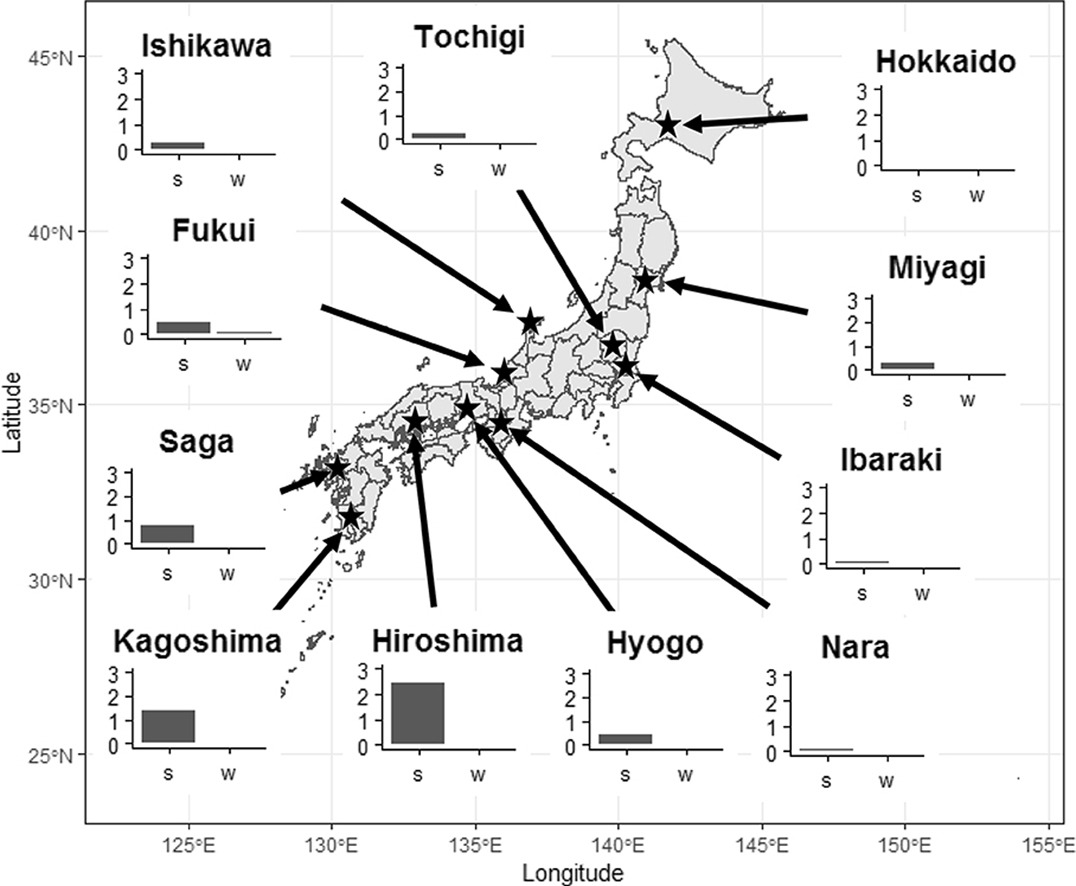The ecological impacts of insecticides in aquatic areas around agricultural lands have long been ignored in the regulation scheme of pesticides in Japan. Upon the scheme, the predicted concentration of an insecticide in the main stream of a river is the only parameter considered, suggesting that the ecological impacts of insecticides on local biodiversity around agricultural fields is underestimated. To fill this knowledge gap, we measured insecticide concentrations in surface water and sediment in aquatic areas around paddy fields at 35 locations across Japan. Among the 18 insecticides considered, 15 were detected somewhere in Japan and their concentrations were generally higher in the southwestern region in Japan (e.g. Hiroshima, Saga, or Kagoshima prefectures). Most insecticides were accumulated at higher concentrations in sediment than in surface water, consistent with previous studies. We also detected insecticides applied to nursery boxes at high concentrations in surrounding aquatic areas, although such application is generally considered to have low environmental risks. In addition, derivatives of fipronil, which have similar toxicity as that of fipronil, were often detected in sediment at higher concentrations than fipronil itself. Concentrations of dinotefuran in water at two sampling points were higher than the 5% hazardous concentration (HC5), indicating a possibility of a risk of acute toxicity to aquatic organisms. Our findings indicate that ecological risk assessments of insecticides and their derivatives should be expanded to include concentrations in sediment and water around paddy fields as well.
Source: Shunsuke Furihata et al. Environmental Pollution, Available online 7 May 2019
https://www.sciencedirect.com/science/article/pii/S0269749118358275

- Login om te reageren
